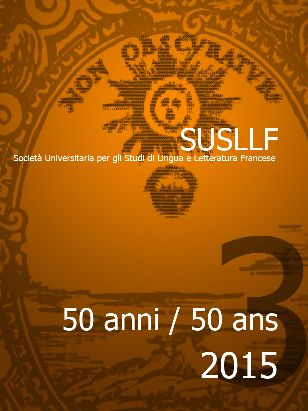Narcisse et la chimère : la maxime au miroir de la fable.
Keywords:
La Fontaine, La Rochefaucauld, fables, maximesAbstract
In L’homme et son image, La Fontaine celebrates the poetics of La Rochefoucauld’s Maximes, showing through an allegoric image their modality of fruition. Nevertheless, the fabulist points out at the same time the proximity and the distance between the Fables and the Maximes. If the anthropology that builds the two books is more or less the same, the relation that each of them establishes with the reader is very different. La Rochefoucauld’s reader is in a way enthralled, seduced by the aesthetic beauty, by the blinding rhetoric of the Maximes just to be confronted with an almost unbearable representation of himself. L’homme et son image ends precisely on this horrified face-to-face: Narcissus paralysed by the reflection of his own “naked” image. This remarkable conclusion evokes the paradoxical alliance, accomplished by La Rochefoucauld, between the formal perfection, the witty style and an exceptionnaly dysphoric vision of human condition, presented in straightforward way to the reader. The fable shows a greater indulgence to its public, because it resorts to the allegoric veil, the childish fiction of humanized animals, that grants a regressive pleasure veiling with an enjoyable fiction the displeasing image of human soul it conveys. This text, however, doesn’t celebrate the Maximes only for their subject-matter, but also on a formal ground. La Fontaine is a past master in the art of subtle contaminations between the genres: here, he evokes the effect of the aphorism by contaminating fable with some related genres as the epigram and the emblem.


